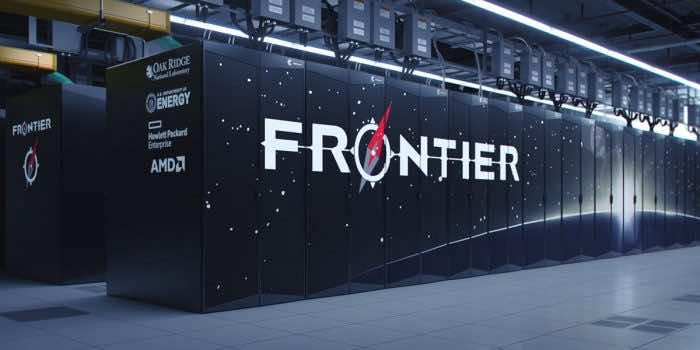On Monday, the Oak Ridge National Laboratory unveiled a showstopper in the world of supercomputing: its latest supercomputer, named Frontier Supercomputer, with 1.1 exaflops of performance.
Frontier is the first supercomputer ever to drastically speed up and perform some of the most complicated calculations plaguing the scientific world. Frontier has been in development at ORNL for a long time. It was put in place in 2021 and is almost ready to start working.

“When researchers gain access to the fully operational Frontier system later this year, it will mark the culmination of work that began over three years ago involving hundreds of talented people across the Department of Energy and our industry partners at HPE and AMD,” Jeff Nichols, ORNL Associate Lab Director for computing and computational sciences, said.
“Scientists and engineers worldwide will put these extraordinary computing speeds to work to solve some of the most challenging questions of our era, and many will begin their exploration on Day One.”
Frontier is almost seven times more powerful than ORNL’s Summit, at 148.6 petaflops on the most recent Top500 benchmark. However, Frontier’s Top 500 bar reached 1.102 exaflop/s, which means it can do roughly 1.1 quintillion calculations every second.

According to ORNL, performing the same number of calculations Frontier can execute in a single second would take more than four years for the entire world’s population. Frontier was the first supercomputer of its kind to officially break the “exascale,” which follows “peta” on the scale.
Frontier, an HPE Cray EX supercomputer, also managed to top the Green500 list, which measures the energy efficiency of supercomputers, with a performance per watt of 62.68 gigaflops. In addition, with a score of 6.88 exaflops, Frontier gained first place in a newer category, mixed-precision computing.
Furthermore, ORNL noted that numerous projects have already been planned to utilise Frontier’s processing capabilities, such as a simulating plasma project and laser-plasma physics to test new cancer treatments or generate comprehensive astrophysical forecasts.


